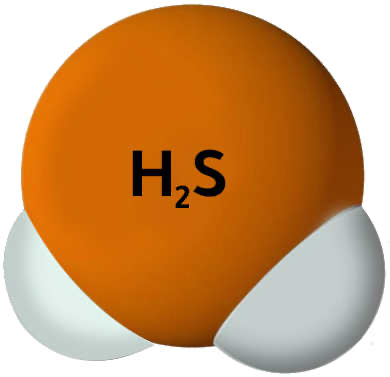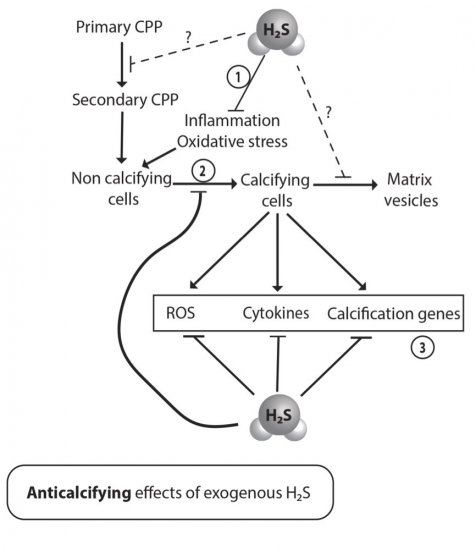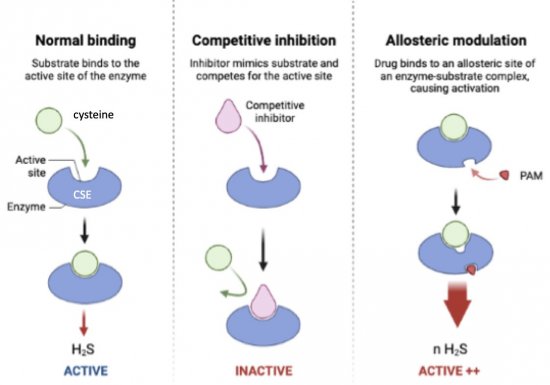
What is H2S ?

H2S (hydrogen sulphide) is a naturally occurring gasotransmitter produced by cells and it acts to regulate cellular function and metabolism. Traditionally called the "bad egg gas" because of its smell, it has multiple biological properties, from the toxic to the beneficial.
It is called the third gasotransmitter (after CO and NO) when its signalling function was discovered in 1996. Since then, a large number of studies have documented the role of H2S in biology and medicine and scientists have tried to modulate its production for medical applications. Publications have suggested that manipulation of H2S levels (inhibition or augmentation) can be beneficial in vascular, neurological and oncological disorders (Wallace JL, Nature Reviews Drug Discovery 2015, doi.org/10.1038/nrd4433).
The biological actions of H2S within cells are multiple and are not all understood. They range from persulfidation of proteins to changes in the redox balance. Its anti-calcification activity is a recent discovery which opens a new treatment option in disease.
Modulating endogenous H2S production
Increasing H2S in target tissues as a therapeutic goal has been previously approached by administration of "H2S donors". As H2S has beneficial as well as potential toxic effects, we explored the potential of modulating endogenous H2S production by allosteric modulation of CSE, one of two enzymes that are responsible for tonic regulation of H2S in tissues as a safe approach to enhance tissue H2S levels.

H2S as anti calcification therapy
Our research has identified that enhanced CSE production of H2S inhibit cellular calcification. H2S acts on multitple levels to reduce this pathological process, and is effective on different cell types, including cartilage cells, vascular smooth muscle cells and skin cells.

CSE allosteric modulators
CSE allosteric modulators may also have therapeutic relevance to other disorders where there is insufficient production of H2S (due to tissue damage, ageing, exposure of toxins) and this is a completely novel area of drug development and a new therapeutic class of drug.
A unique position
To date, no competing drug that act via the same principles has been identified and we are in a unique position to develop novel compounds that we have already identified to bring them to market.